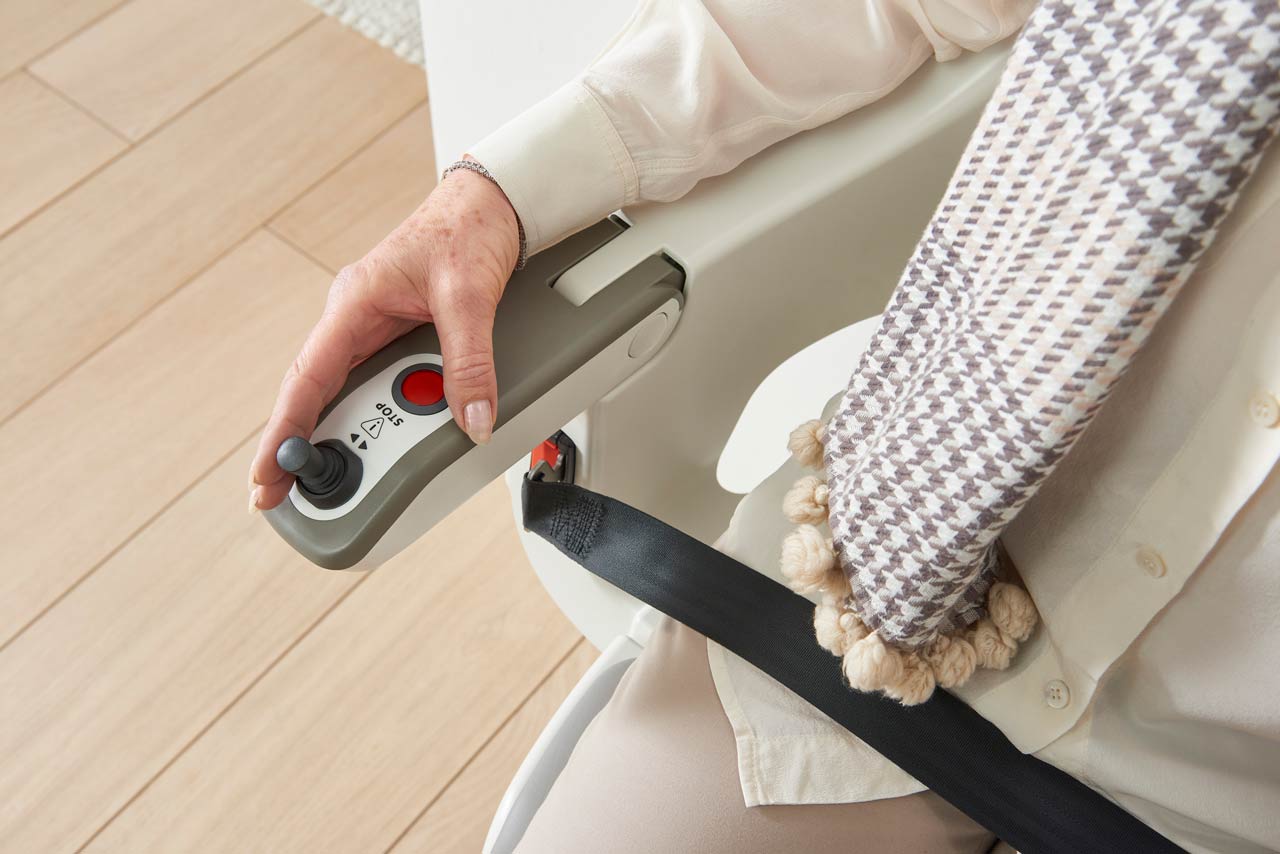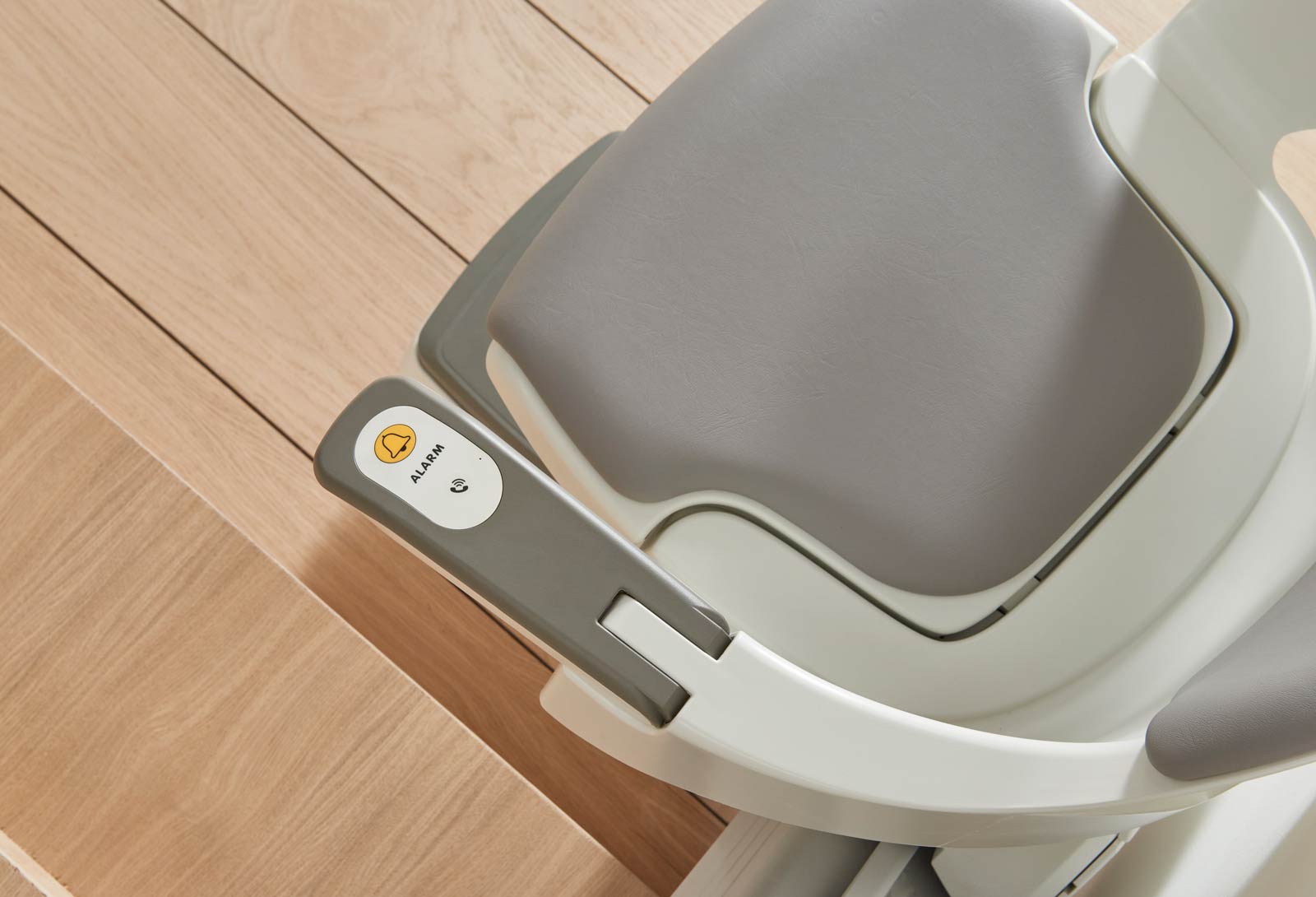Are you ready?
submitted by Access BDD
Over the last 100 years, the stairlift industry has changed drastically regarding technology and safety; due to these advancements, the global market is predicted to hit US$1.3 billion by 2027.
The latest development in this ever-changing market occurred in April when new stairlift safety regulations EN 81-40:2020 came into force for the European stairlift industry, replacing EN 81-40:2008. Any stock held by dealers which meets the previous regulations had to be installed by 15 April 2023.
To learn more about these latest developments in the stairlift industry, we have spoken to Andrew Warbrick, managing director of Access BDD, one of the U.K.’s leading suppliers of stairlifts, platform lifts and home lifts. He explained:
“To comply with the new regulations, every new stairlift must meet the following criteria: interlocking arms, a seatbelt detection system, a separate emergency-stop button and an optional two-way voice communication device. I certainly believe these new regulations are a positive step for all concerned, as anything that improves safety can only be a good thing. The implementation of these new regulations has resulted in manufacturers potentially bringing forward planned new product launches to ensure they meet the criteria.
“Here at Access BDD, we pride ourselves on being at the forefront of the stairlift industry and have ensured all our products fully comply with the new regulations and have trained our staff so they are fully educated on all elements of the new regulations and what they mean for end users and our business partners. For end users, there may be some cost implications, but these, of course, are balanced by a greater level of reassurance on the safety of stairlifts. I think the extra features of the stairlifts will require a little more explanation from our partners when they are talking to customers and handing over the product to the end user, but I don’t see this as an obstacle.
“For some, there has been some confusion on how to interpret the regulations correctly, but I am confident this will become clear in time. The regulations are designed with the users’ safety and well-being in mind, so the impact has got to be positive for all concerned. When speaking to our business partners, some have expressed confusion on how to interpret the regulations and, in turn, concern about the responsibility this puts on them. However, I think that, in general, most of the feedback we have received has been very positive, and I certainly think everyone agrees that anything designed to improve the safety of the user is a good thing.

“These new regulations are all based on improving safety and security, and the recently launched HomeGlide design has pivoted nicely into this new reality. Although some end users struggle with safety belts, the new HomeGlide has managed to stabilise the seatbelt socket within the chair’s framework, making it easier to negotiate. The call system has also been a triumph of design, nicely integrating into the chair armrest, allowing easy access to outside help. Rather than resting on its laurels, Access BDD has always been ahead of the competition in design and functionality, and the integration of new features has always felt designed, rather than an afterthought. The Access BDD product range feels like the standard to which other manufacturers aspire.”
We spoke with Gary Tidman of Only Lifts Ltd., one of Access BDD’s U.K. business partners, who explains how he has responded to regulations:
“The benefit of compelling end users to wear their safety belts is, of course, a sensible move, especially where forgetfulness can, at times, be an issue. An integrated communication device built into the stairlift will take safety and security to another level, especially for those that don’t have a telecare system in place. Ultimately these design changes should help reassure the end user and those that worry about them, such as relatives or friends who can’t always be there. These technologies have the power to make one of the safest types of lift design even safer, and instil a sense of confidence when moving from one level to another.”
Andrew concluded:
“Looking to the future, here at Access BDD we have often thought about the need for some kind of qualification or method of assessment for people who are selling stairlifts to ensure they correctly assess the end user and situation so the best solution is provided with the safety and comfort of the end user in mind. Whether the best place for this is in EN 81-40 is open to debate, but I think it’s an area that deserves more attention.”
Get more of Elevator World. Sign up for our free e-newsletter.










